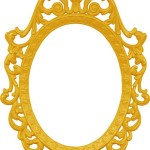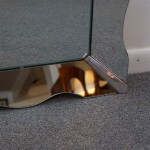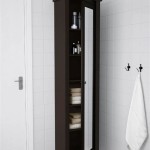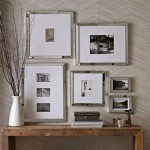Best Hardware For Hanging Heavy Mirrors
Hanging a heavy mirror requires careful consideration of hardware to ensure both safety and stability. Selecting appropriate hardware prevents accidents and ensures the mirror remains securely mounted on the wall. This article will explore the best hardware options for hanging heavy mirrors, covering various factors influencing the selection process.
Factors to Consider When Choosing Hardware
Several key factors influence the choice of hardware for heavy mirrors. Understanding these factors is crucial for making an informed decision:
- Mirror Weight: The weight of the mirror is the most critical factor. Hardware must have a weight capacity exceeding the mirror's weight. Always consult the manufacturer’s specifications for weight limits.
- Wall Type: Different wall types require different fasteners. Drywall requires different anchors than concrete or brick. Matching the fastener to the wall material is crucial for secure mounting.
- Mirror Size and Shape: Larger and irregularly shaped mirrors may require more mounting points than smaller, rectangular mirrors. This distributes the weight more evenly and reduces stress on individual fasteners.
- Mirror Backing: The type of backing on the mirror influences how it can be hung. Some mirrors have pre-installed D-rings or wire, while others have a flat back requiring specialized hardware.
- Location and Usage: Consider the environment where the mirror will be hung. Bathrooms and high-traffic areas may require more robust hardware to withstand humidity and vibrations.
Heavy-Duty Wall Anchors
Heavy-duty wall anchors are essential for securely attaching heavy objects to walls, especially drywall. Several types are suitable for heavy mirrors:
- Toggle Bolts: Toggle bolts are ideal for hollow walls. They provide a strong hold by expanding behind the wall surface. Their weight capacity makes them suitable for heavier mirrors.
- Molly Bolts: Similar to toggle bolts, molly bolts expand behind the wall for a secure grip. They are particularly well-suited for drywall and plaster.
- Wedge Anchors: Wedge anchors are used for solid walls like concrete or brick. They provide a very strong hold and are suitable for extremely heavy mirrors.
- Concrete Screws: Concrete screws are specifically designed for concrete and masonry walls. They offer a high weight capacity and are a reliable option for heavy mirrors.
Mirror Mounting Hardware
Once the appropriate anchors are selected, the correct mounting hardware is needed to attach the mirror to the anchors:
- D-Rings and Wire: D-rings attached to the back of the mirror, combined with heavy-duty picture wire, are a common method for hanging mirrors. Ensure the wire is rated for the mirror's weight.
- French Cleats: French cleats consist of two interlocking pieces of wood or metal. One piece is attached to the wall, and the other to the back of the mirror. They offer a very secure and stable hanging method, particularly for large, heavy mirrors.
- Mirror Clips: Mirror clips grip the edges of the mirror and are secured to the wall with screws. They are suitable for frameless mirrors and offer a clean, minimalist look.
- J-Hooks: J-hooks are designed to hook onto D-rings or wire on the back of the mirror. Choose heavy-duty J-hooks with a weight rating appropriate for the mirror.
Installation Best Practices
Proper installation is crucial for the safety and security of a heavy mirror. Following best practices ensures a stable and long-lasting installation:
- Accurate Measurements: Carefully measure the mirror and mark the desired location on the wall. Accurate measurements ensure the mirror hangs level and in the correct position.
- Stud Finding: Whenever possible, locate and use wall studs for added support. If studs are not available, use appropriate wall anchors.
- Pre-Drilling: Pre-drilling pilot holes prevents the wall material from cracking and makes installation easier, especially when working with hard materials like concrete.
- Weight Distribution: For large or heavy mirrors, use multiple mounting points to distribute the weight evenly. This reduces stress on individual anchors and provides a more secure hold.
- Leveling: Use a level to ensure the mirror hangs straight. An unevenly hung mirror can look unprofessional and may put undue stress on the mounting hardware.
Tools Needed for Installation
Having the proper tools readily available streamlines the installation process:
- Drill: A drill with appropriate drill bits for the wall type and anchors being used is essential.
- Level: A level ensures the mirror hangs straight.
- Measuring Tape: Accurate measurements are crucial for proper placement.
- Stud Finder: A stud finder helps locate wall studs for added support.
- Screwdriver: A screwdriver is needed to drive screws into the wall anchors or directly into studs.
- Pencil: A pencil is used for marking the wall for accurate placement.
- Safety Glasses: Safety glasses protect eyes from debris during drilling.
Choosing the right hardware for hanging heavy mirrors is crucial for safety and aesthetics. Considering factors like mirror weight, wall type, and mirror size helps determine the appropriate anchors and mounting hardware. Proper installation techniques, including accurate measurements and leveling, are also essential. By following the guidelines outlined in this article, individuals can ensure their heavy mirrors are securely and safely mounted.

Heavy Picture Mirror Hanging Kit 50 Kg

How To Hang A Heavy Mirror

How To Hang A Heavy Mirror C R F T

Heavy Picture Mirror Hanging Kit 50 Kg

How To Hang A Large Or Heavy Mirror

How To Hang A Heavy Mirror
How To Hang A 100 Pound Mirror On Drywall Quora

How To Hang A Heavy Mirror With Pictures Wikihow

How To Hang A Heavy Mirror The Home Depot

How To Hang A Heavy Mirror








